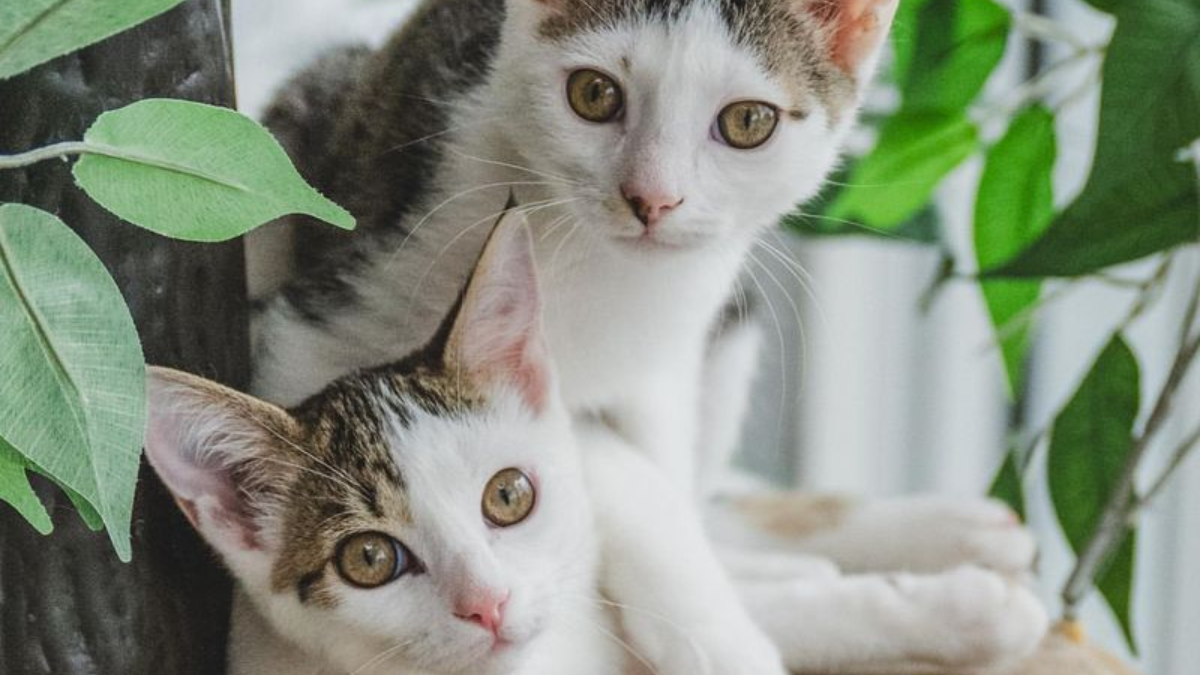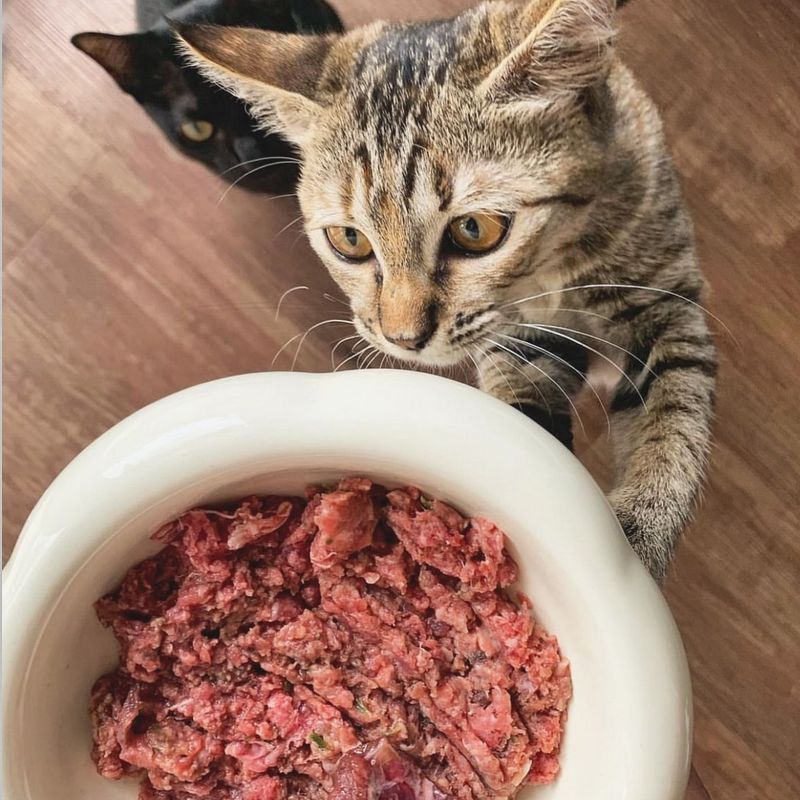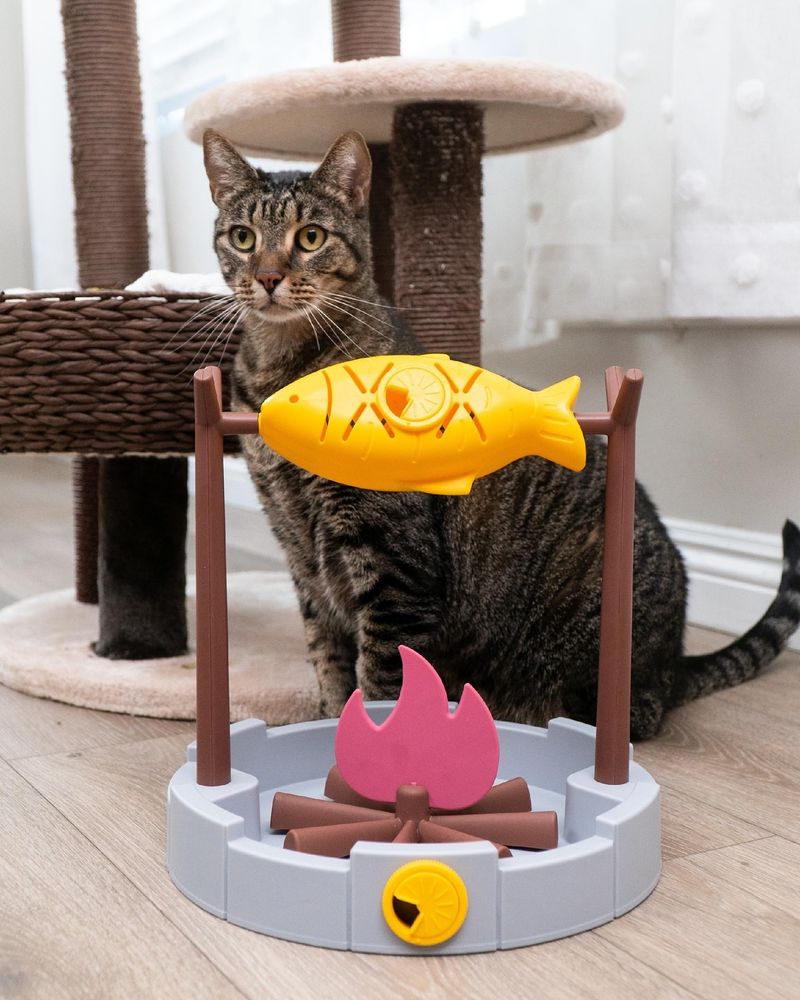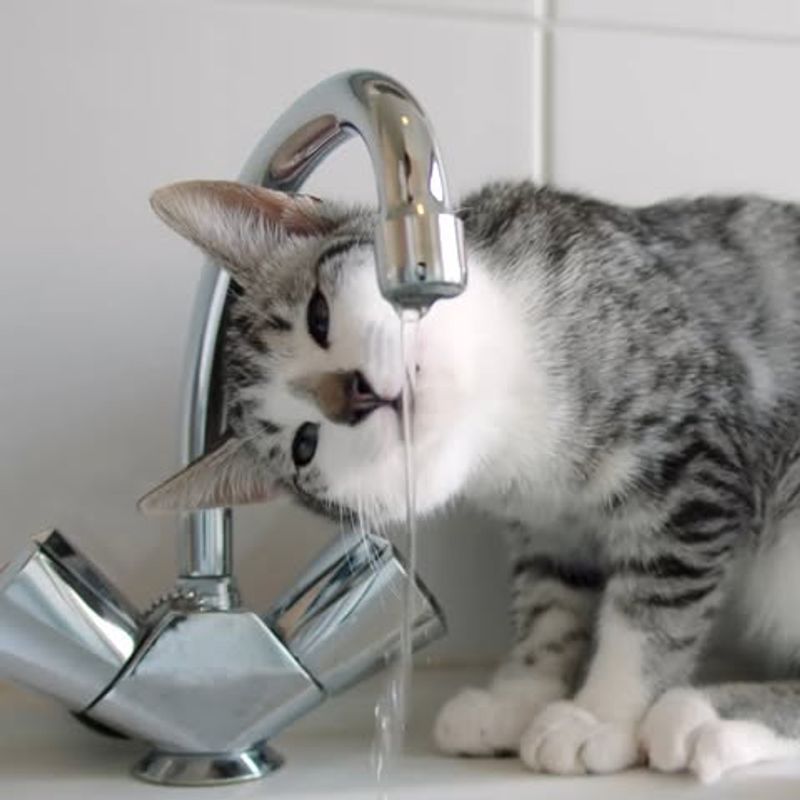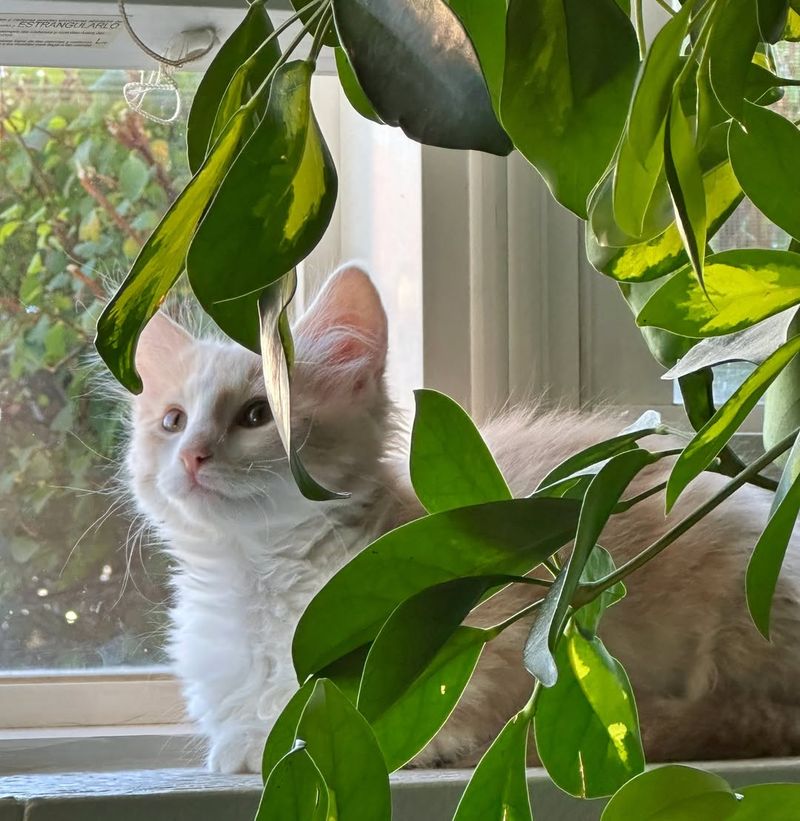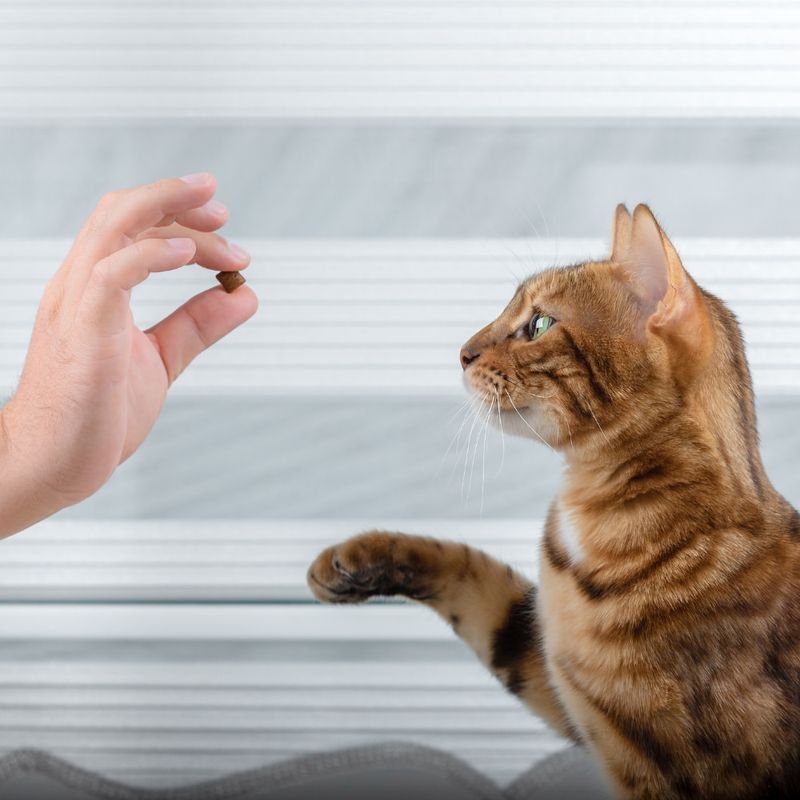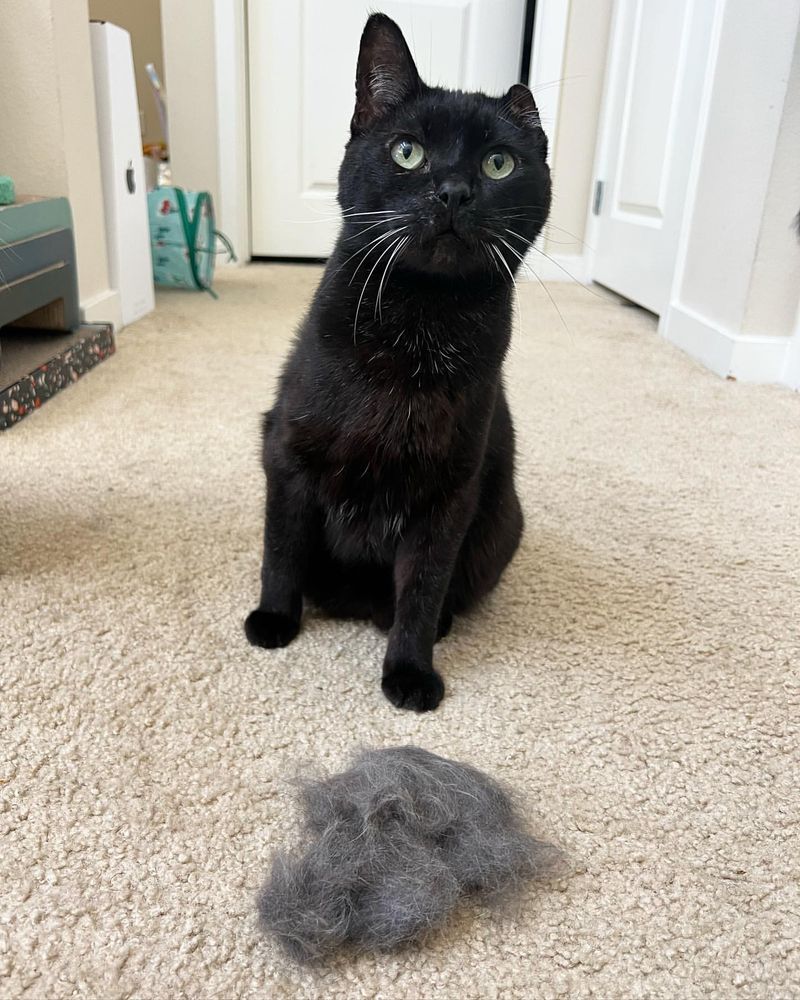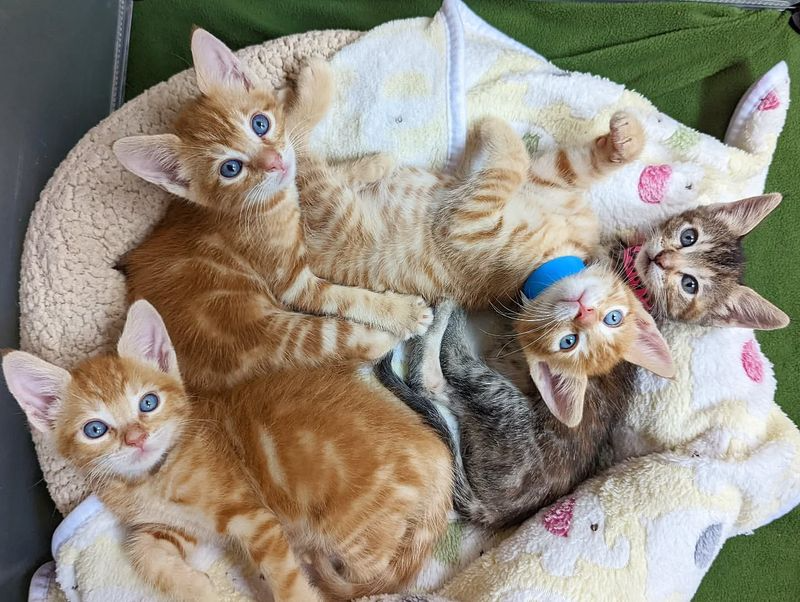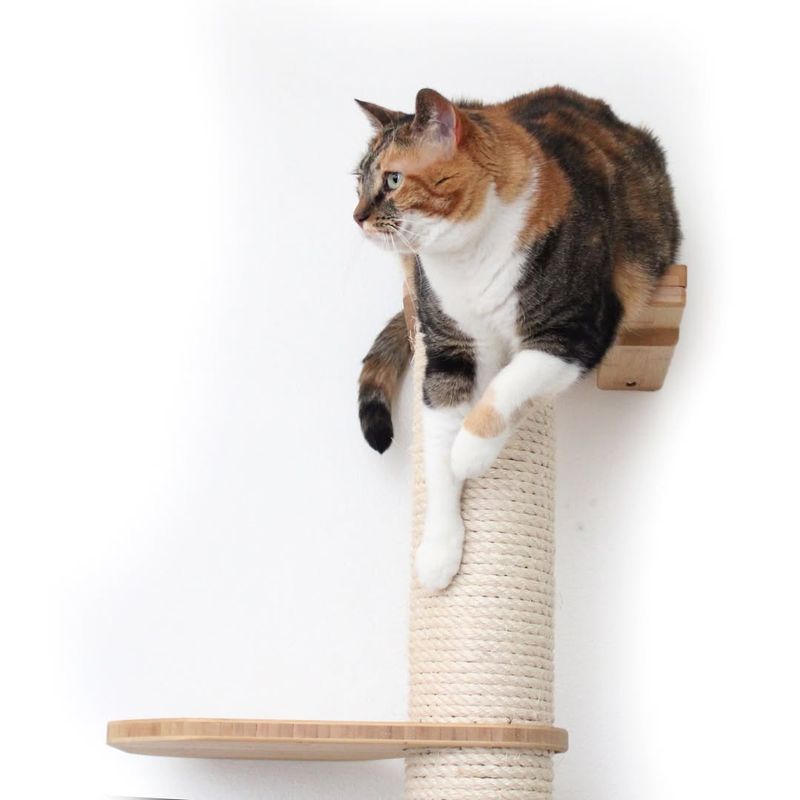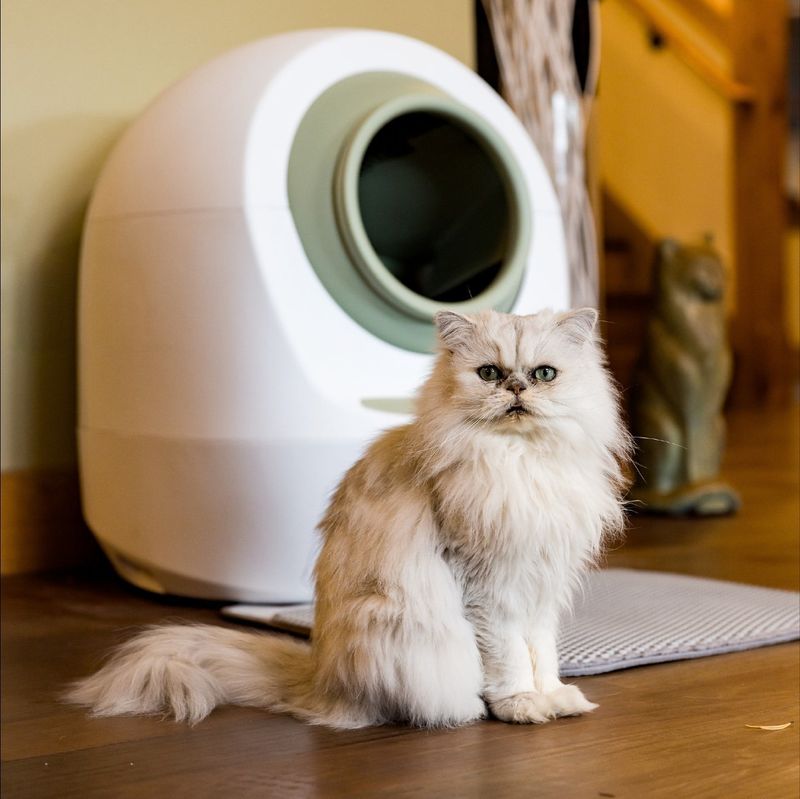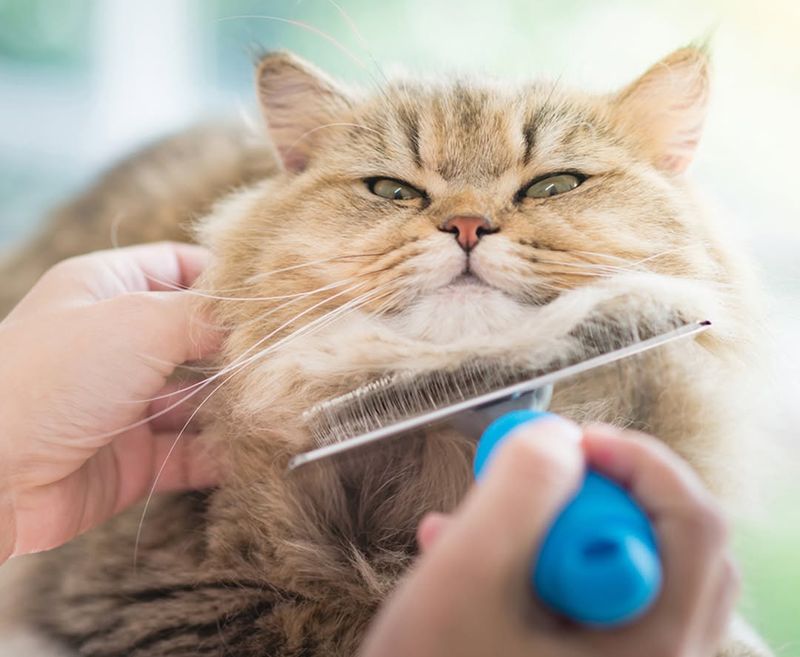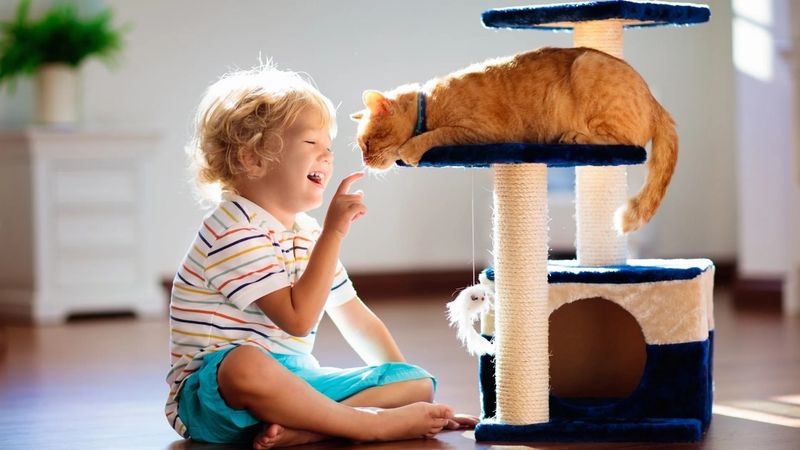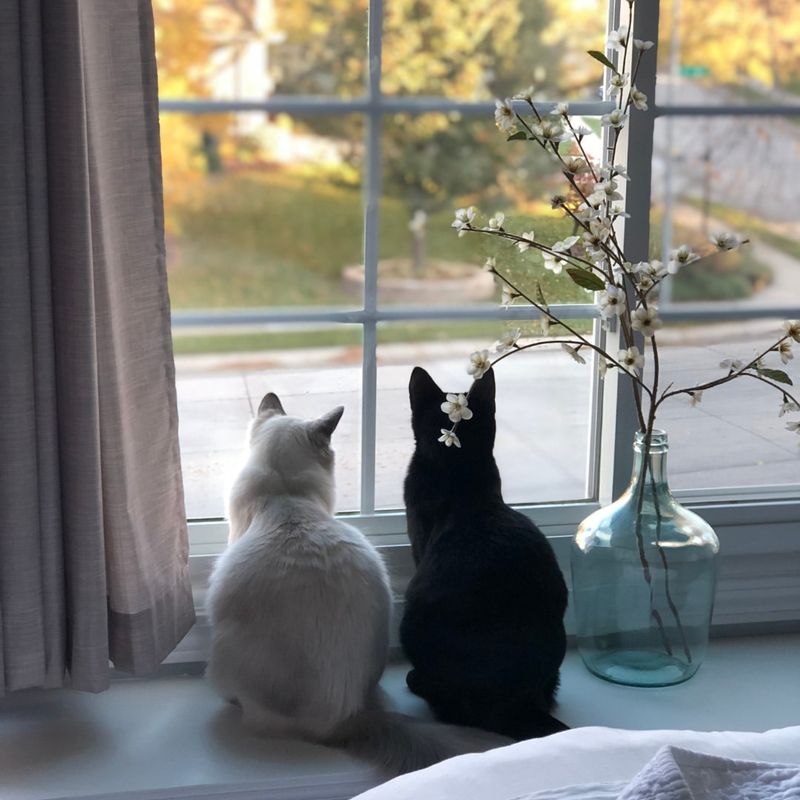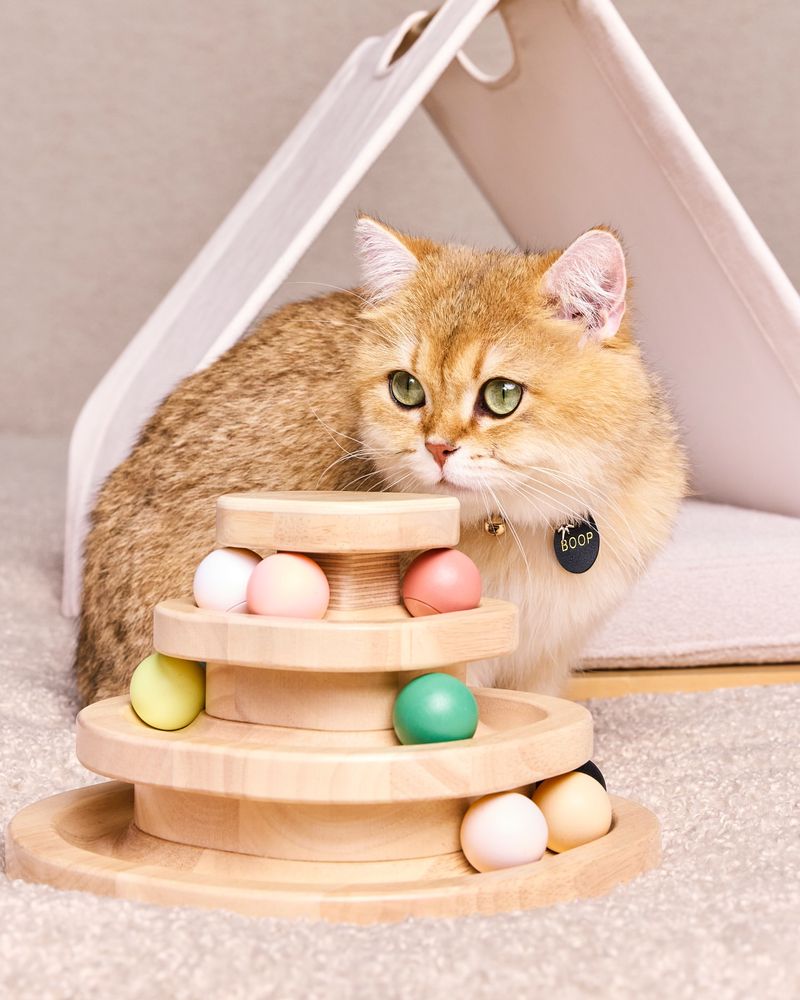📖 Table of Content:
- 1. Feeding a Balanced Diet
- 2. Understanding Cat Body Language
- 3. Creating a Stimulating Environment
- 4. Regular Veterinary Check-Ups
- 5. Importance of Hydration
- 6. Safe Indoor Plants for Cats
- 7. Training with Positive Reinforcement
- 8. Managing Shedding and Hairballs
- 9. Introducing New Cats to the Household
- 10. Using Cat-Proofing Techniques
- 11. The Benefits of Spaying and Neutering
- 12. Providing Vertical Spaces
- 13. Understanding Litter Box Preferences
- 14. Grooming for Health and Bonding
- 15. Playing to Relieve Stress
- 16. Monitoring Dental Health
- 17. Dealing with Separation Anxiety
- 18. Choosing the Right Cat Toys
- 19. Understanding Your Cat’s Vocalizations
Let’s be honest: living with a cat is a delightful mix of cuddles, chaos, and the occasional existential stare from across the room.
Whether you’re a seasoned cat parent or a fresh recruit in the feline fraternity, there’s always something new to learn about these mysterious little creatures who somehow run our homes.
From solving the age-old mystery of “Why is the cat ignoring the $50 toy I bought?” to uncovering ways to keep their litter box from taking over your entire living room’s vibe, this list has it all.
These 19 tips are the kinds of insights you’ll wish someone had whispered to you the first time you brought that tiny ball of fluff home—or maybe when they started sprinting across your face at 3 a.m.
1. Feeding a Balanced Diet
Feeding your cat a balanced diet is crucial for their overall health. Cats are obligate carnivores, meaning they require a diet rich in meat and protein. Providing a combination of wet and dry foods ensures they receive the necessary nutrients and hydration. Start by understanding the dietary needs specific to your cat’s age and health conditions. Consult with a vet to create a meal plan that satisfies their nutritional requirements.
In addition to commercial cat foods, consider supplementing with fresh meat or fish occasionally. Be cautious with human foods, as some can be harmful to cats. Avoid ingredients like onions, garlic, and chocolate.
Remember, portion control is key. Overfeeding can lead to obesity, which poses numerous health risks. Monitor your cat’s weight and adjust food portions accordingly to maintain a healthy lifestyle.
2. Understanding Cat Body Language
Cats communicate with their bodies, and understanding their signals can strengthen your bond. A cat with a raised tail and relaxed whiskers is usually happy and confident. Pay attention to their eyes; slow blinking can be a sign of affection. Take cues from the position of their ears and tail to gauge their mood.
Recognizing signs of distress or anger is equally important. A twitching tail or flattened ears might indicate irritation. In such situations, give your cat space to calm down.
Learning to interpret these signals can prevent misunderstandings and improve communication. Over time, you’ll learn to anticipate your cat’s needs and emotions, creating a harmonious environment for both you and your feline friend.
3. Creating a Stimulating Environment
Cats are natural hunters and explorers, so a stimulating environment is essential. Provide a variety of toys that cater to their instincts, such as feather wands and puzzle feeders. Scratching posts are vital for maintaining their claws and marking territory.
Consider the vertical space in your home. Cats love climbing and observing from high vantage points. Window perches or cat trees can offer great entertainment, especially if they overlook a garden or bird feeder.
Regularly rotate toys to keep your cat engaged and curious. A stimulating environment reduces stress and prevents behavioral issues. By catering to their natural instincts, you’ll foster a happy and healthy pet.
4. Regular Veterinary Check-Ups
Regular veterinary check-ups are vital for your cat’s health. Early detection of potential issues can make treatment more effective and less costly. Schedule annual or bi-annual visits depending on your cat’s age and health status.
These visits are crucial for vaccinations, dental care, and monitoring weight. Discuss any behavioral changes with your vet, as they might indicate underlying health problems.
Establishing a good relationship with your vet can provide invaluable support and guidance throughout your cat’s life. Being proactive about health care ensures your feline companion remains healthy and happy.
5. Importance of Hydration
Hydration is crucial for your cat’s health, yet many cats do not drink enough water. Investing in a water fountain can encourage your feline to drink more, as they are often attracted to running water.
Ensure fresh water is always available and regularly cleaned. Placing multiple water sources around the house can increase your cat’s water intake. Wet food is another excellent way to boost hydration.
Proper hydration supports kidney function and overall health. By encouraging your cat to drink more, you reduce the risk of urinary tract infections and other health issues. Make hydration a priority in your cat’s wellness routine.
6. Safe Indoor Plants for Cats
Plants can enhance your home’s aesthetics, but some are toxic to cats. Choose non-toxic plants such as spider plants, cat grass, or bamboo palm to keep your feline safe. Cats often nibble on plants, so offering safe options can satisfy their curiosity.
Avoid plants like lilies, poinsettias, and philodendrons, which can cause severe health issues if ingested. Research and label your plants to prevent accidental poisoning.
Providing cat-friendly greenery not only safeguards your pet’s health but also enriches their environment. A safe, plant-filled space can be both beautiful and inviting, offering your cat a slice of nature indoors.
7. Training with Positive Reinforcement
Training your cat using positive reinforcement can be rewarding for both of you. Cats respond well to treats and praise, which can encourage desired behaviors. Begin with simple commands like ‘sit’ or ‘come’.
Consistency is key. Use the same cue words and rewards to reinforce behavior. Patience is vital as each cat learns at their own pace. Avoid negative reinforcement, as it can cause fear or anxiety.
Positive training strengthens your bond and enriches your cat’s life. It can also help manage behavioral issues, providing a clear communication path. Celebrate small victories, and watch your cat thrive as they learn new skills.
8. Managing Shedding and Hairballs
Shedding and hairballs are common cat issues. Regular grooming reduces loose hair and prevents matting. Invest in quality grooming tools suited for your cat’s coat type.
Brushing removes excess fur that might otherwise end up in your cat’s stomach, forming hairballs. Increase grooming sessions during shedding seasons to manage fur loss.
Providing hairball control treats or food can also help. These products are designed to aid digestion and prevent hair accumulation in the gut. Regular grooming not only keeps your cat’s coat healthy but also strengthens your bond through gentle, caring interaction.
9. Introducing New Cats to the Household
Introducing a new cat can be stressful for both existing pets and the newcomer. Gradual introductions are key to success. Start by keeping them in separate rooms, allowing them to get used to each other’s scent through a closed door.
Swap bedding or toys between the cats to further familiarize them with each other’s smell. Supervised face-to-face meetings should be brief initially. Gradually increase interaction time as they become more comfortable.
Patience is crucial; rushing the process can lead to aggression or anxiety. With time and careful management, cats can form harmonious relationships, enriching each other’s lives and yours.
10. Using Cat-Proofing Techniques
Cat-proofing your home prevents accidents and protects your belongings. Secure cables and cords to prevent chewing, which can be dangerous. Store breakables and hazardous substances out of reach.
Use child-proof locks on cabinets containing cleaning supplies or medications. Ensure trash cans have secure lids to avoid curious cats getting into harmful substances.
By cat-proofing your home, you create a safe environment for exploration. This attention to detail prevents accidents and ensures your cat’s safety, allowing them to roam freely without risk.
11. The Benefits of Spaying and Neutering
Spaying and neutering have numerous benefits for cats. These procedures prevent unwanted litters and reduce the risk of certain health issues, such as uterine infections and prostate problems.
Neutered males are less likely to roam or engage in territorial fights, decreasing injury risks. Spayed females avoid the stress of heat cycles.
Beyond health benefits, these procedures contribute to controlling the pet population. Discuss with your vet the appropriate timing for these surgeries, taking into account your cat’s health and lifestyle. Making this decision is a responsible step for any pet owner.
12. Providing Vertical Spaces
Cats love vertical spaces as they provide a sense of security and control. Installing cat trees or shelves allows your feline to climb and perch, fulfilling their natural instincts.
High vantage points offer a place to relax or observe the household. They can also help reduce territorial disputes among multiple cats, providing each a personal space.
Vertical spaces enrich your cat’s environment, promoting exercise and mental stimulation. They offer an essential outlet for their climbing behavior, contributing to their overall well-being.
13. Understanding Litter Box Preferences
Cats can be particular about their litter boxes. Ensuring the right type and placement is essential for their comfort. Choose a litter that your cat prefers; it might take some trial and error to find the perfect match.
Place the litter box in a quiet, accessible location. Cats value privacy and a peaceful environment for this essential activity. Ensure the box is cleaned regularly to avoid odors and encourage use.
Multiple cats might require multiple boxes to prevent territorial disputes. By respecting your cat’s preferences, you ensure they have a comfortable space for their needs.
14. Grooming for Health and Bonding
Regular grooming is vital for your cat’s health and your relationship. Brushing removes loose fur and prevents matting, especially in long-haired breeds. It also distributes natural oils, keeping the coat shiny and healthy.
Grooming sessions provide an opportunity to check for parasites or skin issues. It’s a chance to bond, as many cats enjoy the attention and tactile engagement. Use the right tools for your cat’s coat type to make the experience pleasant.
Consistent grooming reduces furballs and keeps your cat comfortable, reinforcing a positive connection with your pet.
15. Playing to Relieve Stress
Playtime is not just fun; it’s crucial for relieving stress in cats. Interactive play replicates hunting, providing both physical exercise and mental stimulation. Use toys like feather wands or laser pointers to engage your feline.
Regular play helps prevent behavioral issues by channeling energy into positive outlets. It’s also a great way to bond with your cat, strengthening trust and affection.
Schedule play sessions daily, tailoring activities to your cat’s preferences and energy levels. Through play, you’ll contribute to a healthy, happy, and well-adjusted pet.
16. Monitoring Dental Health
Dental health is often overlooked in cats but is crucial for their overall wellness. Regularly check your cat’s teeth and gums for signs of plaque or inflammation. Introduce dental treats or toys that promote oral hygiene.
Brushing your cat’s teeth can be challenging, but starting young helps them adjust. Use cat-specific toothpaste and brushes for the best results.
Regular vet check-ups should include dental assessments. Addressing dental issues early prevents pain and more serious health problems. Prioritizing dental care contributes significantly to your cat’s quality of life.
17. Dealing with Separation Anxiety
Some cats experience separation anxiety when left alone. Creating a comforting environment can help alleviate stress. Leave a piece of your clothing with them for a familiar scent.
Provide engaging toys and consider leaving a radio or TV on to simulate presence. Gradually accustom your cat to your absence by starting with short periods away.
If anxiety persists, consult a vet for additional advice or behavior modification strategies. Addressing separation anxiety improves your cat’s well-being and ensures a peaceful household.
18. Choosing the Right Cat Toys
Choosing the right toys can greatly influence your cat’s happiness. Select toys that stimulate hunting instincts, such as feathered wands or moving objects. Puzzle feeders can challenge their minds during meal times.
Observe your cat’s preferences to tailor toy selections. Some cats prefer certain textures or types, so variety is essential. Rotate toys to maintain interest and engagement.
The right toys provide mental and physical exercise, reducing stress and preventing boredom. By investing in diverse, appropriate toys, you enrich your cat’s life, keeping them active and satisfied.
19. Understanding Your Cat’s Vocalizations
Cats use vocalizations to communicate with humans. Understanding these sounds can enhance your relationship. Different meows might signify hunger, curiosity, or the desire for attention.
Listen to the tone and context of vocalizations. A purring cat is usually content, while growls or hisses indicate discomfort or fear. Responding appropriately to these cues strengthens trust.
Over time, you’ll learn to interpret your cat’s unique ‘language’, fostering a deeper connection. This understanding promotes a harmonious living environment, where both you and your cat feel understood and valued.
